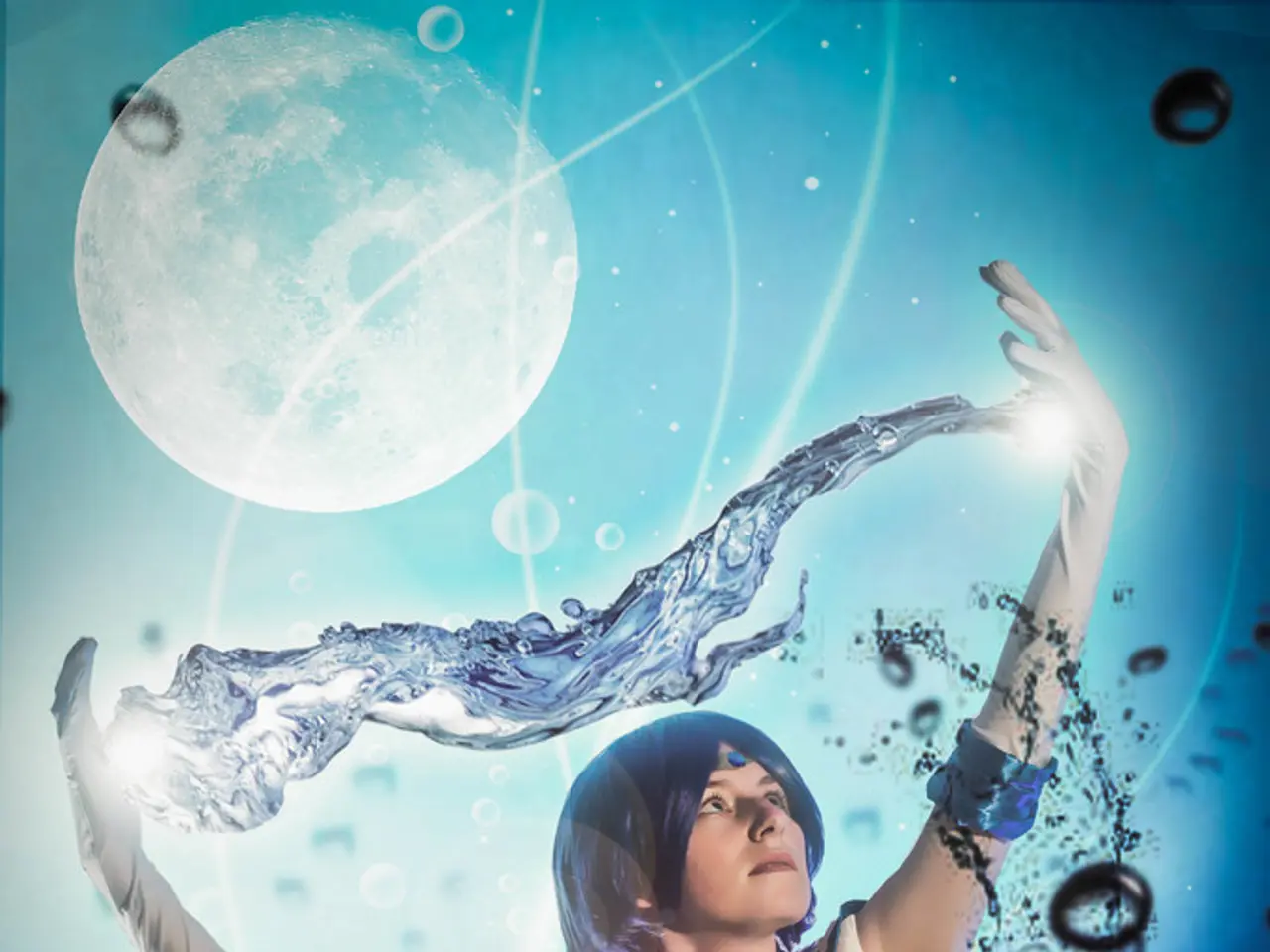NASA equips Artemis spacesuit with Oakley's gold-plated visor technology for lunar missions
In an exciting development for space exploration, Oakley has partnered with Axiom Space to design the visor system for NASA's Artemis spacesuit, set to be used in the Artemis III mission scheduled for mid-2027. This collaboration marks a significant step forward in the next chapter of space exploration.
The Prizm Cosmos technology, developed specifically for lunar applications, is a game-changer. It features a 24-karat gold-plated coating that acts as an effective reflector of infrared radiation, protecting astronauts' eyes from the intense and unfiltered solar radiation on the Moon's surface. This advanced coating is crucial in preventing damage from the harsh sunlight experienced in space.
One of the key advantages of the Prizm Cosmos technology is its ability to address the unique challenges of lunar environments. It reflects infrared radiation to prevent eye damage caused by direct and strong sunlight without atmospheric filtering. Moreover, it incorporates Oakley's decades of expertise in high-definition optics to ensure visual clarity and protection for astronauts.
The visor system also offers additional features like a flip-down visor for use in extreme lighting conditions, enhancing flexibility and safety during moonwalks. This technology not only safeguards vision by mitigating the severe solar glare and radiation on the Moon but also leverages consumer optical innovations to improve space exploration gear.
The Prizm Cosmos system includes an anti-scratch coating to withstand lunar dust and micrometeorites, a deployable visor that reflects harsh near-infrared light, and an internal shield with high transmittance in the visible region. It also includes filtration of UV radiation in the 180-395 nm range and reduces haze to optimise visual quality and clarity.
The Artemis III mission, scheduled for mid-2027, means we're just a few years away from seeing these visors in action on the lunar surface. The visors have a 24-karat gold coating, which reflects infrared radiation better than most materials. They function flawlessly across extreme temperature variations on the Moon, from around 250 degrees Fahrenheit in direct sunlight to minus 400 degrees in permanently shadowed regions.
This collaboration between Oakley and Axiom Space is driven by Oakley's expertise in extreme sports environments, recognising astronauts as athletes operating at an entirely different level. Companies like Prada and Nikon are also contributing fashion and camera technology expertise to space exploration, respectively.
The partnership between Oakley and Axiom Space reflects a broader trend of commercial innovation driving space exploration forward. The visor system incorporates Oakley's next-generation High-Definition Optics (HDO) technology, allowing astronauts to deploy and stow different components based on lighting conditions.
The collaborative approach to space technology development could accelerate innovation in ways that traditional government-only programs haven't achieved. The Prizm Cosmos technology developed for lunar applications could eventually find its way into high-end sports and professional applications on Earth. This collaboration is a testament to the power of partnerships in driving innovation and pushing the boundaries of what is possible in space exploration.
- The collaboration between Oakley and Axiom Space in designing the visor system for NASA's Artemis spacesuit is part of a broader trend of commercial innovation driving advancements in space-and-astronomy technology.
- The Prizm Cosmos technology, used in the visor system, is not only designed for lunar applications but could potentially find its way into high-end sports and professional applications on Earth, thanks to its innovative features such as next-generation High-Definition Optics (HDO).
- The visor system, featuring Oakley's Prizm Cosmos technology, offers additional features like a flip-down visor and an anti-scratch coating to withstand lunar dust and micrometeorites, demonstrating the potential for gadgets and software originating from space exploration to revolutionize various industries, including space-and-astronomy, technology, and even sports.




